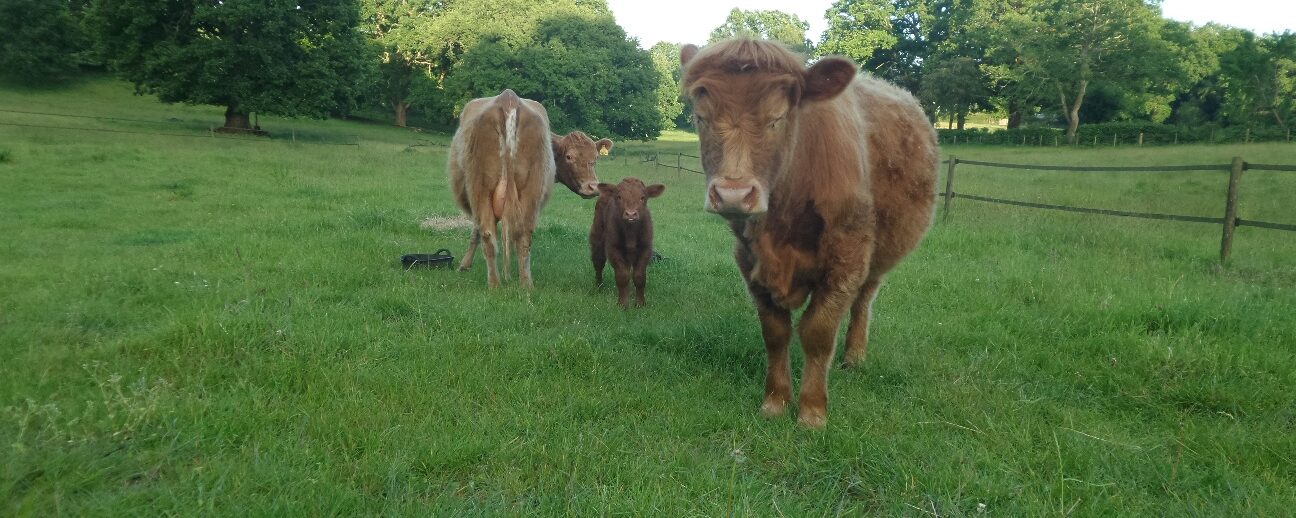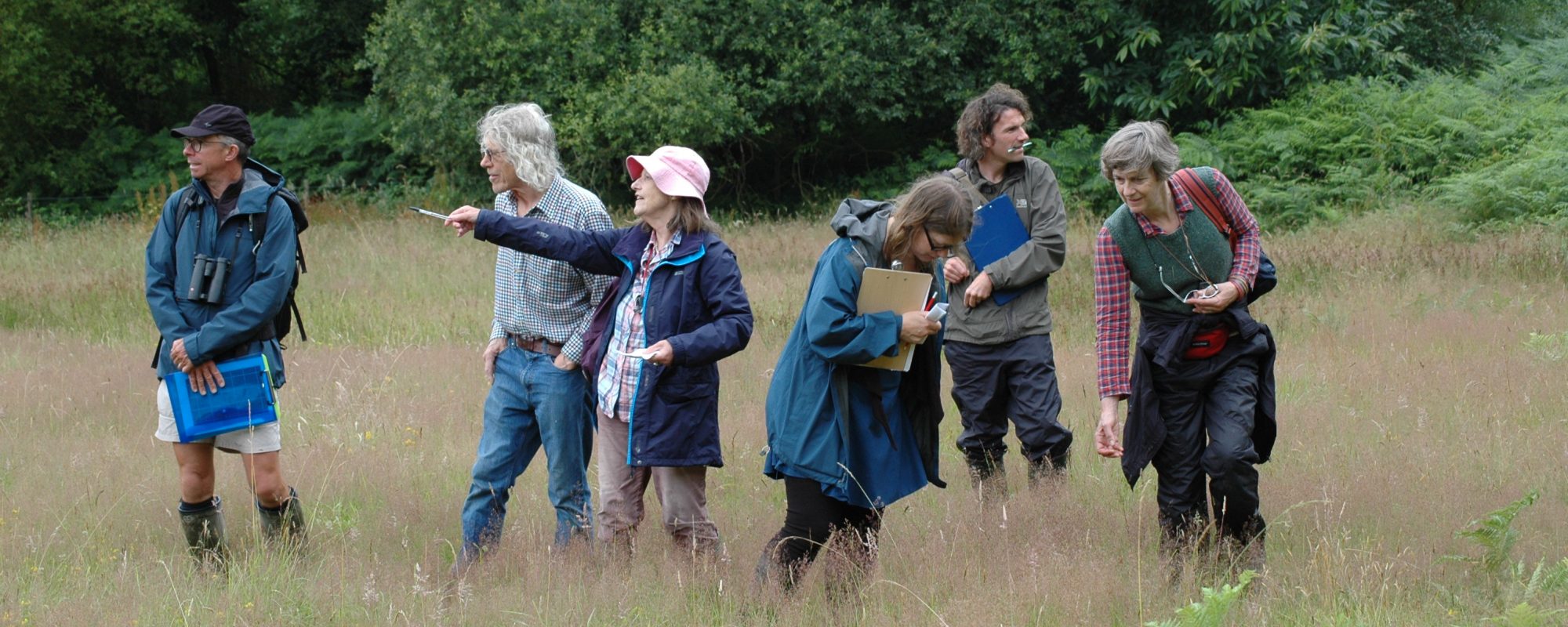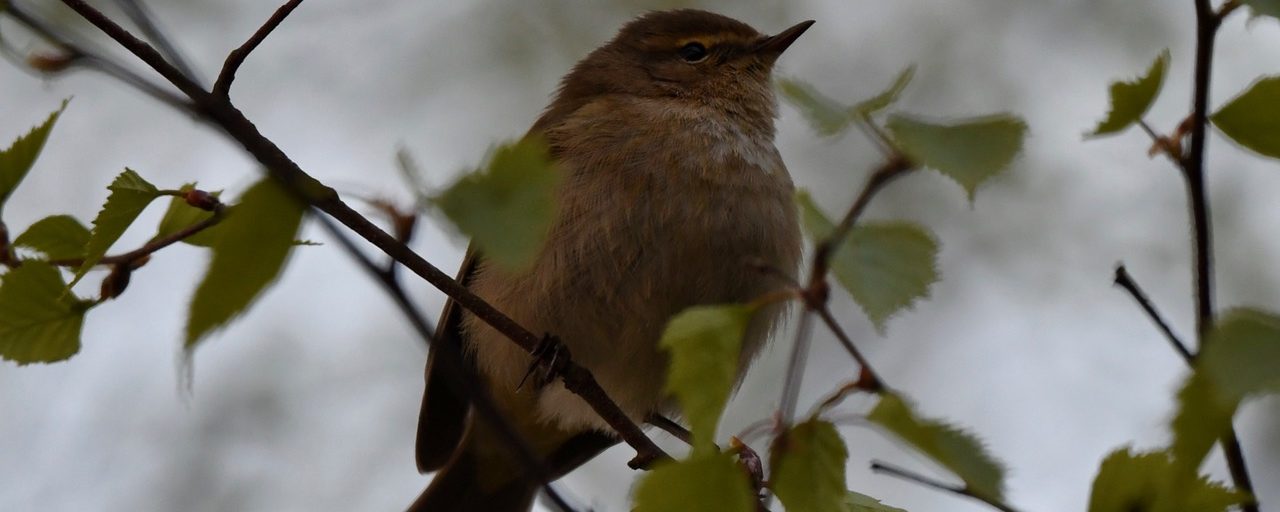Welcome to the Myrtle Farm website.
Since world war II Myrtle Farm has been a mixed pigs poultry and dairy farm. And latterly a beef rearing farm. The farm presently comprises approximately 16 acres of permanent pasture and 10 acres of mixed woodland. Our aim is to return the landscape to a wilder more natural state increasing biodiversity, improving habitat and capturing even more carbon.
A “managed” return to nature.
The idea of wilding is outlined by the Knepp website :
The vision of the Knepp Wildland Project is radically different to conventional nature conservation in that it is not driven by specific goals or target species. Instead, its driving principle is to establish a functioning ecosystem where nature is given as much freedom as possible. The aim is to show how a ‘process-led’ approach can be a highly effective and low-cost method of ecological restoration – suitable for failing or abandoned farmland – that can work to support established nature reserves and wildlife sites, helping to provide the webbing that will one day connect them together on a landscape scale
Although at Myrtle Farm we would like to emulate this process lead approach, we are too small to have all the animals that Knepp can. For example in the Southern block of Knepp (1000 acres) there are 120 cattle, 7 Sows, 200 Fallow deer, 60 Red deer, 12 Exmoor ponies. This would translate on our 26 acres to 3.2 cattle , 0.2 sows, 7 Deer (various), & 0.3 horse or pony.
The diversity of Fauna at Knepp allows for a diversity of grazing types, for example Exmoor ponies like brambles at some times of the year, and Sows turn over the land acting like ploughs and actively eat bracken roots and thistle. At the moment Myrtle farm has 3 cows which represent the aurochs that once grazed the European landscape. We hope to “borrow” deer from the surrounding countryside, Deer are allowed to come and visit, by virtue of the fact that the fencing we employ to contain the cattle allows most of the wild deer species in southern England to pass freely through. We may add some Exmoor or similar horses but will probably have to perform the ecological role of the wild boar by some other means.
Knepp is a massive experiment and Myrtle Farm will also be an experiment. But unlike Knepp we already have land that has been untouched by fertilizers and herbicides for many years, never had pesticides applied, and permanent pasture which has not been under the plough for around 50 years, so we do not want to lose the wide diversity of species we already have. We are also on a very different soil type located at the foot of the greensand ridge, with different flora and fauna.
We will feel our way through the process as it develops. We would like to give huge thanks to all those who have given their advice so far. Taking all the comments on board we have developed the following plan.
The Plan (so far!)
- We will continue to monitor the flora and fauna on the farm regularly to assess any changes.
- Consider introducing other grazers to allow natural processes to take place.
- Allow access to the woodlands by grazers by fencing the perimeter of the site and remove internal fences allowing the cattle to roam in the woods.
- Allow some trees and scrub to develop in the fields and allow the rushes to grow (dependent on natural grazing patterns) ensuring that we don’t lose any of our existing grassland species.
- Remove the non native rhododendron from the woods to allow native undergrowth to develop so that it is safe for the cattle.
- Slowly increase the light getting into the woodland by removing some of the younger sweet chestnut trees. (allowing the wood to decay naturally)
- Encourage some regeneration of native trees in the fields.
- Greatly improve and blur the boundary habitat between woodland and scrub and grass/pasture.
- Add a pond to the site
- See what happens!


